
Child: They can’t see their families and they are not allowed to leave.
Child: I want to be Iron Man.
Child: He is strong and can shoot fire.
Child: I am Captain America. When I am a Superhero, I can run really fast.
Child: I want to be Batman. He has Bat Weapons to save the world.
From the mouths of babes. We hear these stories everyday. Stories about the need to save the world. (and boy, is that true!!) Scary stories. Stories about monsters. Stories about natural disasters. And unfortunately, stories about children and adults dying. We are uncomfortable, because we know its our job to protect these children, and to help them feel safe. These conversations are very, very uncomfortable, very discombobulating, but so very necessary.

Diane Levin, in her article on war play states, “Most young children look for ways to feel powerful and strong. Play can be a safe way to achieve a sense of power. From a child’s point of view, play with violence is very seductive, especially when connected to the power and invincibility portrayed in entertainment. The children who use war play to help them feel powerful and safe are the children who feel the most powerless and vulnerable.”
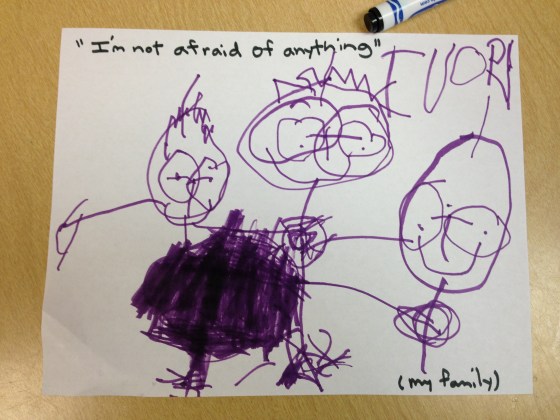
We have tried a variety of techniques to help children talk about their fears. Some time back, we had very strong winds, and trees were felled, and many homes were damaged. The children came into the program with a mixture of excitement and of fear. “Do you know that the wind was so blowy that it blew the houses down? And many trees too?” We decided to help children deal with their fears by talking about natural disasters. We gave them plastic straws and watercolor paints and watched as they made pictures of the power of the wind.
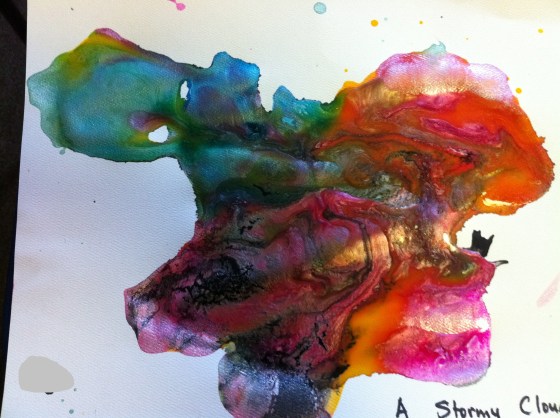

There are several other techniques that we use to help children manage their fears.
Explore – Encourage your child to talk about his/her fears: this the “tell me more” approach. We sit down with the children and encourage them to talk about how they feel, and we make sure to transcribe their stories.

Reassure – talk, reassure. Talk some more….and reassure even more!! Once children have talked to us about what they are frightened of, we make sure to reassure them. We talk about it at circle time; we give them props to help them make sense of their insecurities.
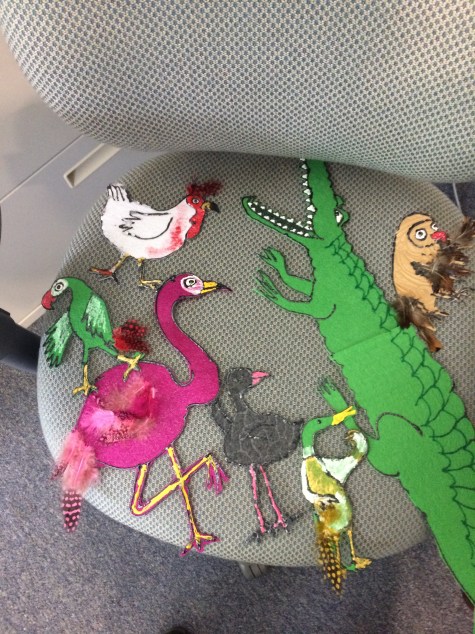
Problem Solve – We had several children who had an irrational fear of snakes. We talked about ways they would feel comfortable, and many expressed that they wanted to touch a “real” snake. So, one of our staff members brought in a snake. Another brought in a musical instrument, a “jarana,” which has the tail of a rattlesnake in it to help produce the music the instrument makes. The children were totally fascinated by both the rattlesnake tail, and by the real live snake as well. More conversations followed, and at the end of it, the children felt far more comfortable about the whole idea of snakes, and they all agreed that snakes weren’t that bad after all!

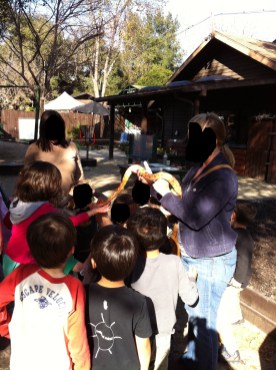
Books, play dough, dramatic play props: Read books which feature characters who face similar fears as their own- my favorite is “Squeaky Door,” a story about a little child who’s scared to sleep on his own: he ends of having all the animals of the farm on his bed, and ultimately, the bed breaks! Characters such as the little boy in ” Squeaky Door” give children coping strategies to deal with similar fears. fears. “Books allow children to temporarily detach from their own fear and to look at it more objectively. ”

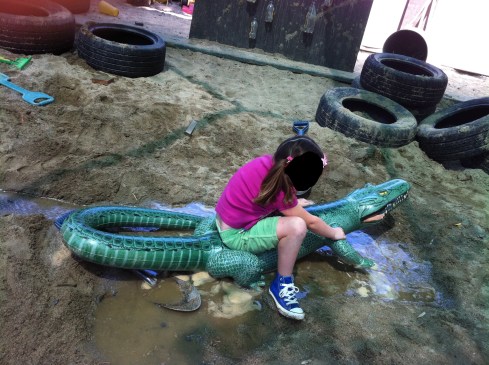
When anxieties and fears persist, more serious problems can arise, which is why it is important to help children manage , and in fact conquer their fears. I always have generic capes available, and I strongly encourage children to think of their own superpowers to help them feel brave and strong. I do not give them store-bought props, but rather, I sit with them, and help talk them through the process of creating their superpower props! It seems far more powerful that way!

Young children are still working through the understanding of what’s real and what’s pretend. Here’s an excerpt of a conversation that I had with children:

When young children witness”scary” events and accidents like floods, or fires, or even storms, directly (many witness accidents on their way to school) or on television, they are likely to feel afraid and confused. Images of destruction on T.V. (like the replay of the planes hitting the towers on 9/11, or recently, of what’s happening in Syria) and suffering can cause very high levels of anxiety in young children. It’s important to note that young preschoolers are most fearful when they do not understand what is happening around them.
Which is why it is of paramount importance to have these difficult conversations.